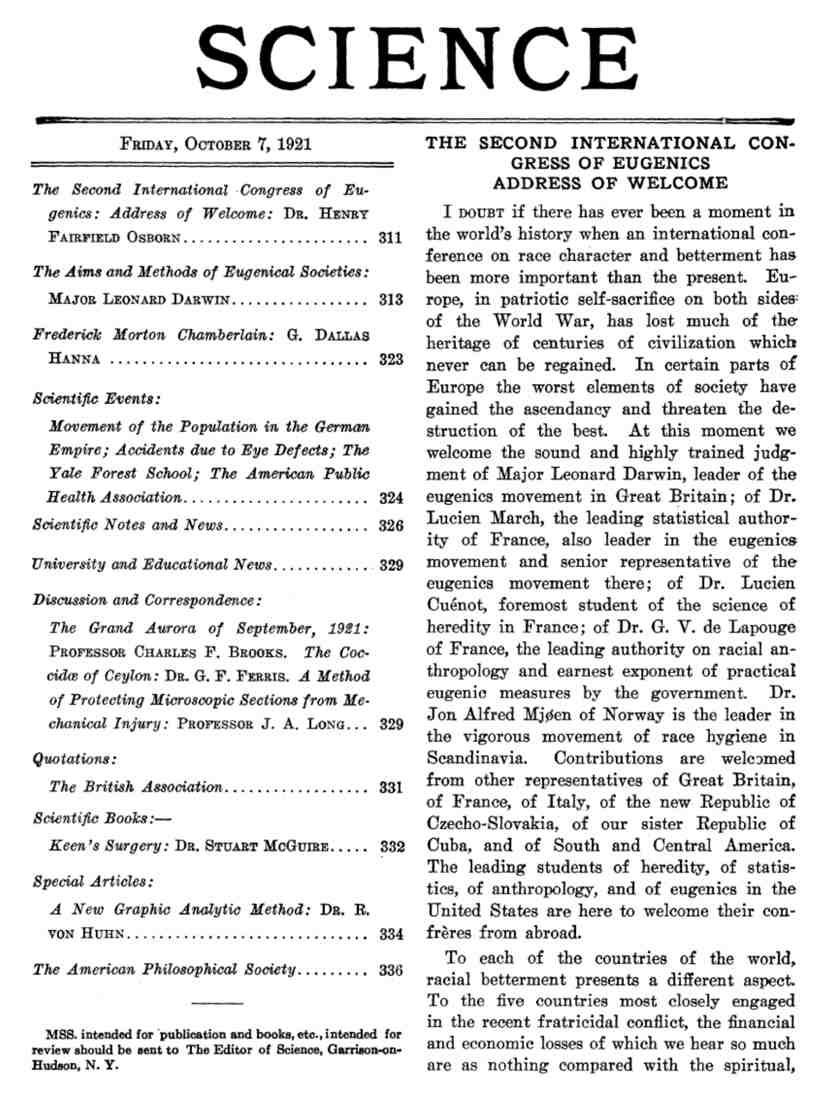The Eugenics Movement in Retrospect
By Rob DeSalle,
Natural History
| 12. 11. 2021
Despite warnings by biologists and geneticists, eminent individuals and venerable institutions helped promote a false theory that led to sterilizations and genocide.
One hundred years ago, the Second International Congress of Eugenics was held from September 22-28, 1921, at the American Museum of Natural History (AMNH) in New York City. The assembly opened to enthusiastic fanfare and positive media attention. Alexander Graham Bell (1847-1922) was the honorary president. On the first evening, paleontologist and museum president, Henry Fairfield Osborn (1857-1935), opened the scientific portion of the Congress with a welcoming address that set a hopeful tone for the meeting—one of discovery and high-quality scientific presentations. Science magazine printed the address in its entirety. In a paper published in The Eugenics Review, Clarence Cook Little (1888-1971), then at the Carnegie Institution of Washington, summarized the goals of the meeting and the speaking schedules.
The Second Congress had four sections entitled “Human and Comparative Heredity,” “Eugenics and the Family,” “Human Racial Differences,” and “Eugenics and the State.” AMNH mounted an exhibition for the event, called the “Exhibition of Eugenics.” Henry Hamilton Laughlin (1880-1943), superintendent of the Eugenics Record Office at the Cold Spring Harbor Laboratory on Long Island, NY, edited a book-size account...
Related Articles
A Review of Exposed by Becky McClain
“Do not get lost in a sea of despair. Be hopeful, be optimistic. Our struggle is not the struggle of a day, a week, a month, or a year, it is the struggle of a lifetime. Never, ever be afraid to make some noise and get in good trouble, necessary trouble.”
— John Lewis
Becky McClain became famous when she successfully sued Pfizer, one of the very largest pharmaceutical and biotech companies. She...
By Katherine Long, Ben Foldy, and Lingling Wei, The Wall Street Journal | 12.13.2025
Inside a closed Los Angeles courtroom, something wasn’t right.
Clerks working for family court Judge Amy Pellman were reviewing routine surrogacy petitions when they spotted an unusual pattern: the same name, again and again.
A Chinese billionaire was seeking parental...
By Sarah Kliff, The New York Times | 12.10.2025
Micah Nerio had known since his early 30s that he wanted to be a father, even if he did not have a partner. He spent a decade saving up to pursue surrogacy, an expensive process where he would create embryos...
By Carter Sherman, The Guardian | 12.08.2025
A huge defense policy bill, revealed by US lawmakers on Sunday, does not include a provision that would have provided broad healthcare coverage for in vitro fertilization (IVF) for active-duty members of the military, despite Donald Trump’s pledge...




